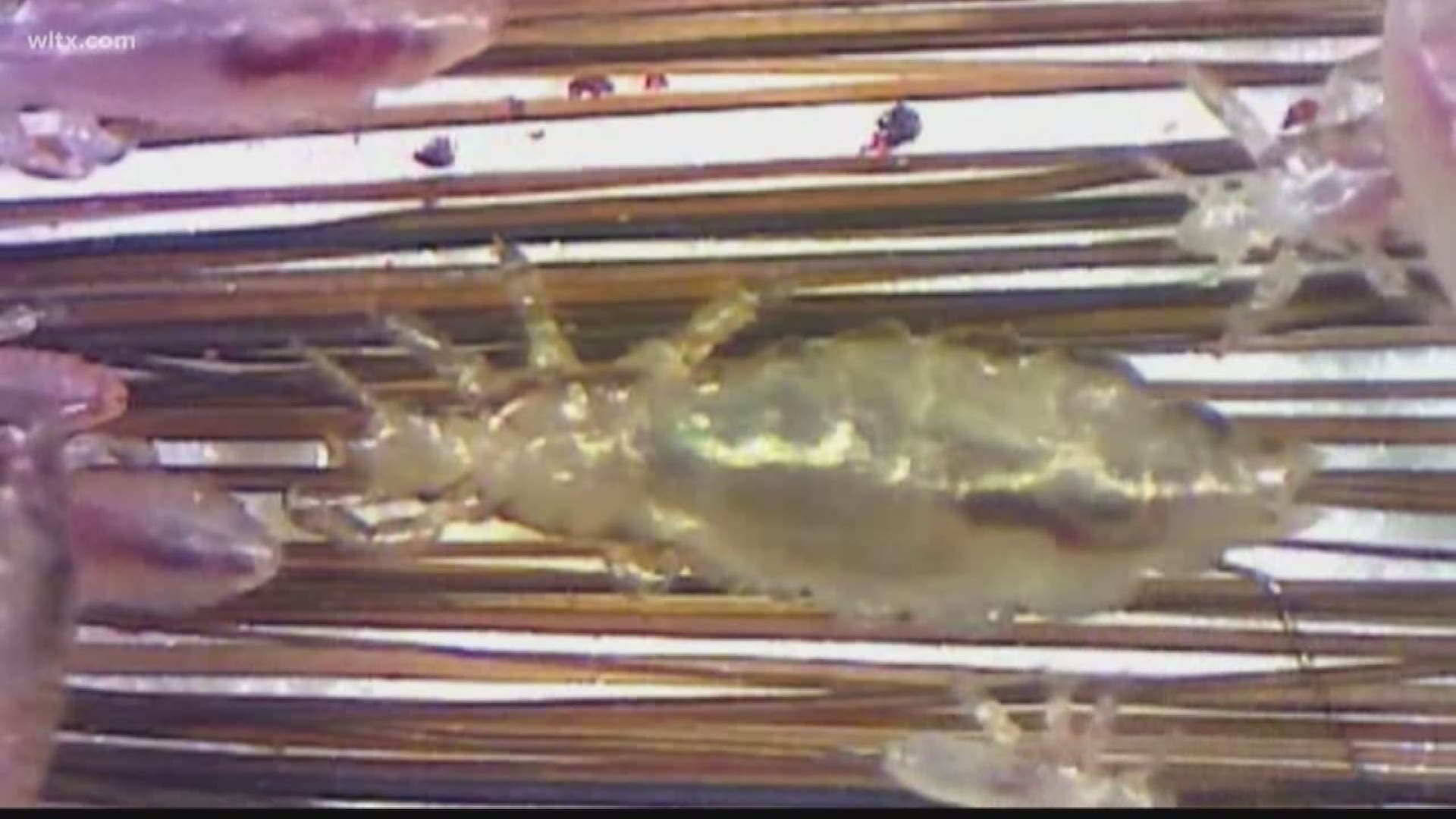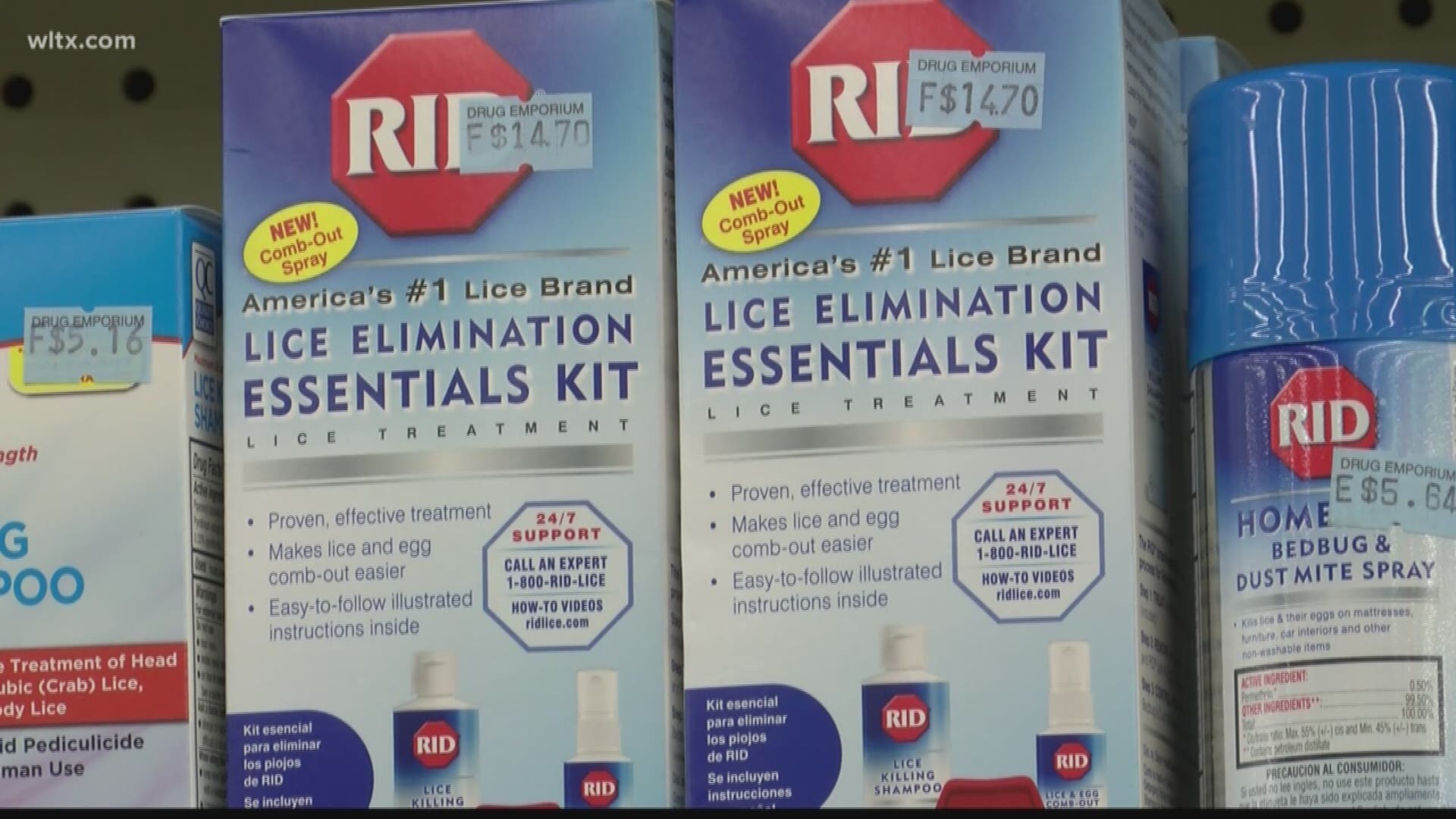Columbia, SC (WLTX) - The kids are headed back to school, and one friend you don't want them to bring home is lice.
Head lice (Pediculosis humanus capitis) are tiny, wingless parasitic insects that live close to the human scalp and feed on human blood. An estimated 6 million to 12 million infestations occur each year in the United States, most commonly among children 3 to 11 years old.
According to the CDC, dogs, cats, and other pets do not play a role in the transmission of human lice.
They say lice move by crawling and cannot hop or fly from head to head.
But there are many other myths about their affects on our families. We're on your side with what experts says is true about head lice, as cited by the Centers for Disease Control and Prevention, the American Academy of Pediatrics, the National Association of School Nurses and other child health organizations:
Myth 1: Schools are full of lice
Fact: "They don't jump or fly or do anything crazy like that. So usually hair to hair contact-- kids playing around, rough and tumble they sort of go from one thing to the next," says Doctor Peter Bailey from Lexington Medical Center. This makes head lice infestations easy to spot at schools, though it is usually acquired elsewhere through head-to-head contact at sleepovers and camps. Also, while children should be encouraged not to share hats, hairbrushes, clothes and other personal items, the chances of transmission from these sources are low.
Myth 2: Only dirty people get head lice.
Fact: Personal hygiene and household or school cleanliness are not factors for infestation. Head lice affect people of all ages and socioeconomic levels, however, it is most common in children.
Myth: Nits in the hair mean live lice are present.
Fact: Nits (eggs laid by the adult female head louse) are oval-shaped and tiny (about the size of a knot in thread). Nits take about eight or nine days to hatch. They need warmth from the scalp to do so. Bailey says it's also important to keep in mind that just because you do not see live lice does not mean the nits aren't present.
Myth 3: Home remedies such as oil and mayonnaise can get rid of head lice
Fact: There is no scientific evidence that home remedies are effective treatments. Doctors recommend using store bought remedies that include permethrin, which is also called Nix. If you see nits, doctors say you do not need regular treatment, but you should go through their hair with a wet comb to try to remove all of the nits.
Head lice prevention and treatment
Pre-emptive head checks: Health experts and schools recommend all parents check their children weekly for head lice whether or not they have signs.
Signs of infestation: Tickling, itching, irritability and difficulty sleeping (lice are more active at night), sores on head
How to check for lice: Under a bright light, look at your child’s head, starting with the back of the neck and behind the ears. Part hair into small sections, using a magnifying glass if available. Lice are about the size of a sesame seed. Nits are gray or whitish and attached firmly to the hair shaft.
If you suspect your child has lice:
Do: Notify your school.
Do: Talk to your school nurse or family physician about appropriate treatment options. In most cases, over-the-counter products combined with diligent and repeated nit removal are effective. Check the CDC website for detailed product information, www.cdc.gov/parasites/lice/head/treatment.html.
Do: Remove lice and nits using a fine-tooth comb. Inspect and comb through small sections of hair removing lice or nits until no more are observed. Comb hair daily until no live lice are discovered for two weeks. This should take approximately 15 to 20 minutes a day.
Don’t: Use any pesticide or chemical not specifically labeled for treating head lice.
Do: Follow product instructions. Failure to retreat, as indicated, retreating too soon or too late are likely causes for re-infestation, according to the CDC.
Don’t: Apply treatment to hair that has been washed with conditioning shampoo or rinsed with hair conditioner, which acts as a barrier that keeps the medicine from adhering to the hair shaft.
Do: Wash clothes, towels, bed linens and other items using the hottest water setting (at least 130 degrees). Dry laundry at the highest setting for at least 20 minutes. Items that can’t be washed can be sealed in a plastic bag for two weeks.
Do: Soak combs and brushes in hot water (at least 130 degrees) for five to 10 minutes.
Do: Vacuum the floor and furniture, but don’t make yourself crazy. Lice die after one to two days at room temperature away from a host’s scalp.
Don’t: Use insecticide sprays or bombs. They aren’t needed and may unnecessarily expose your family to toxic chemicals.
Do: Check family members for lice. Preemptive treatment is not usually recommended for people without evidence of an active infestation.
Don’t: Treat pets. Head lice do not live on pets, and pets don’t play a role in spreading head lice.
Do: Wear long hair up in a ponytail or bun to prevent infestation.


